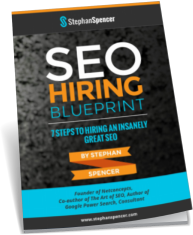Most businesses run online ads, with Google Ads often being their platform of choice.
While it’s pretty easy to learn the basics and set up a campaign in Google Ads, there are a few things you need to understand to keep your ad costs down, your conversion rate up, and make sure that you’re only paying for the most qualified leads.
When running online ads it’s best to start small, gather data, and iterate as you scale up. As with all marketing, it’s a matter of testing and continual improvement.
So, if you’re new to Google Ads, here are a few things to keep in mind…
1. Set Up Conversion Tracking
To get more conversions, you first have to understand where and how your customers are converting.
What keyword brings you the most sales? Which headline gets the most clicks? Which landing page converts the most effectively?
This might seem obvious, but you’d be surprised how many business owners are not tracking the performance of their ads.
It’s crazy! And, it’s a waste of money. Often times, simple tweaks like rewording a headline or updating the design of your landing page can drastically improve your conversion rate.
To track conversions, create and conversion tracking tag in Google Ads and add it to your website. See detailed instructions here.
2. Optimize Your Landing Pages
If you run ads promising “cheap flights to Rome” and then send people to a generic landing page with no information or special deals on flights to Rome, what do you think will happen?
They’ll bounce back to the search results page and try a different website.
Alternatively, if you offer them a landing page with all available flight deals to Rome ordered from the cheapest to the most expensive, they’re probably going to stick around and maybe even book a flight.
Once you understand your audience and the keywords they prefer to use to search for your products, create specific landing pages that are connected to the offers in your ads.
3. Set Up Remarketing
Remarketing allows you to show tailored ads to people who’ve previously visited your website or downloaded your app.
This has a number of benefits, including being able to create messages for people you already know are interested in specific products, offer special deals for returning customers, and target people who are further along in the sales funnel.
Remarketing ads also generally have a much higher click through rate than conventional ads.
To set up remarketing, you’ll need to create a tag for your website or app inside Google Ads. There are detailed instructions here.
4. Set Up Geotargeting
When most people set up Google Ads campaigns, they tend to set their targeting to the country they’re in and forget about it.
But, imagine running ads across the whole of the US and not realizing that 90% of your conversions are coming from the Los Angeles and New York metropolitan areas.
For one thing, all those ads in areas where people are not interested in your product are driving your click rate down and your ad costs up.
By analyzing what geographic locations your conversions are coming from, you can hone in on the areas where you target audience lives, and forget about the rest.
5. Higher Bids/Top Position Won’t Necessarily Get You More Conversions
Another mistake people commonly make is thinking that having the highest bid or reaching the #1 position on average will ultimately result in more clicks and conversions.
Often, the cost of the number one position isn’t justified by additional amount of conversions. Test your conversion rate when you average position is #2 and #3 (or even lower) and evaluate whether you really need to be paying extra for the top position.
Also, experiment with lowering your bids and see if has any effect on your conversion rate overall. what’s the lowest bid you can get away with without affecting your conversion rate?
While holding the #1 position seems to have a special cache for some businesses and marketers, it’s better to make decisions based on your data than blindly waste money trying to outbid your competitors.
For more great Google Ads tips, check out my interview with Perry Marshall on the Marketing Speak podcast.


 SIGN UP FOR EXCLUSIVE WEEKLY CONTENT
SIGN UP FOR EXCLUSIVE WEEKLY CONTENT 


Leave a Reply